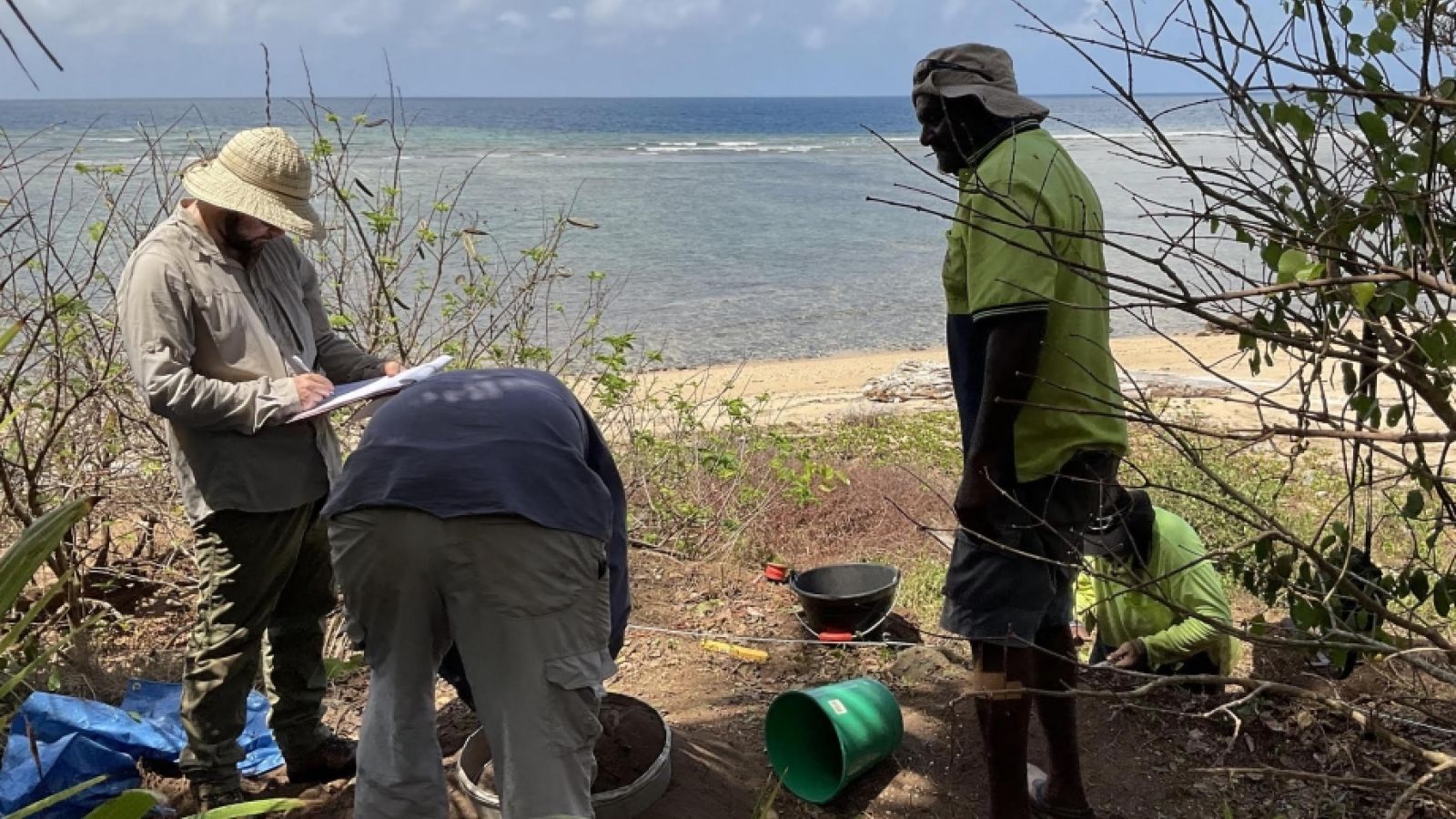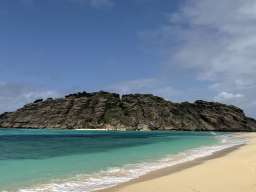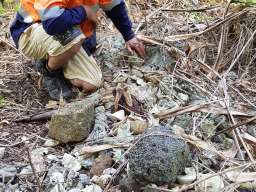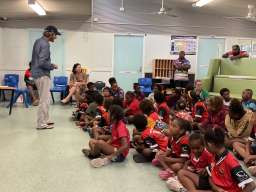Sacred sites and ancient trackways of the Murray Islands in the Torres Strait

Field team on Dauar Island.
A new Australian Research Council project led by the ANU is investigating ritual sites that have been an important part of Miriam Mer culture for many hundreds of years.
The Murray Island group is made up of three islands. The community today lives on Mer, the main island and the home and burial place of Eddie (Koiki Mabo). Two islets about 4km off Mer – Dauar and Waier – are uninhabited, but remain important for cultural and spiritual reasons and for traditional practices such as hunting and fishing.
Mabo’s historic High Court case that established native title in Australia was based on ongoing patterns of connection and use of land and sea by Indigenous people in the Murray Islands, including the use of sacred places. The project brings together archaeology, museum studies and ethnography to assess the long history of these places and practices.
The project is led by ANU archaeologists A/Professor Duncan Wright and Professor Geoffrey Clark, and Dr Jillian Huntley at Griffith University, and includes PhD student Joshua Willsher (CAP) and MAES student Elisa Scorsini (CASS). The project is community-driven and incorporates ancient patterns of connection and traditional histories from elders of Dauareb tribe who include Segar Passi, Alo Tapim, Andrew Passi.
Ritual mobility is a key part of human belief systems that connect people with the landscape, as in pilgrimage journeys. Wright and Clark note that ritual movement was practised throughout Australia and the Pacific in the past, but many routes have been lost since colonialism and the arrival of Christianity. Today, Indigenous communities like the Dauareb and Meriam are interested in reviving knowledge of these trackways that linked the Torres Strait islands with Papua New Guinea and mainland Australia.
At the first field season in September 2022, the team camped on Dauar which is a nesting site for green turtles which come ashore overnight on the high tides. The archaeological team was forced to decamp in the dark on several occasions by turtles completely undeterred by the tents in their path.
Waier Island is the remains of a volcanic crater, whose shape is clearly seen in the dramatic crescent shape of the rocky islet. It was the home of Waiet, who lived there perhaps 300 years ago, and who has a significant stature as a cultural hero in the Torres Strait.
According to local histories, Waiet travelled the islands of the Torres Strait, carrying exotic rocks with him. The rocks and shell shrines were used to mark sacred and ritual sites, which have long played a role in feasting, dancing, initiation and other life-stage traditions. These sites are known as “zogo” sites, a term used to describe sacred or spiritually potent objects' places and people. Stones have been associated in the Torres Strait with heroes, myths and magic, and are sometimes said to be inhabited by the spirit of powerful ancestral figures.
The specifics of the ritual systems established by Waiet remain unclear. In western islands, practices associated with the belief system date from 700 or 800 years ago. Initiation rituals have been traced back 300 years in the Murray Islands, at a site that has long been used by the Dauareb to bury their dead.
The research team will map and date zogo sites, analyse the rocks in them to determine their source, and compare the materials to stone artefacts in Australian and overseas collections in places such as the University of Cambridge Museum, where artefacts were taken by collectors including Alfred Haddon in the late 19th century. This work will shed light on Waiet's travels, enabling the reconstruction of an ancestral pathway while also examining subsequent initiation rituals brought by this important ancestor. The geological work will form the basis of Wilsher’s PhD.
In the first field season, the team excavated a prehistoric settlement at a location that Waiet is reputed to have visited on Dauar Island. The Ormi site appears to date at least 2500 years ago, although carbon dating will determine a precise age. Finds include early ceramics that may have been brought from Papua New Guinea or perhaps Indonesia when the island was first colonised.
The Meriam people are hoping one outcome will be the establishment of a community archive and keeping a place to preserve the material culture, document the prehistory and help young people in the community learn more about their ancestral sites that remain so important.
Eddie (Koiki) Mabo was born on Mer Island in 1936. He and fellow Mer Islanders launched their claim for ownership of the islands in the High Court in 1982.
The authors gratefully acknowledge the support and help of Dauareb and Meriam including James Zaro, Sabu Wailu, Falen (Doug) Passi, Ron Day and the cultural heritage organisation - Mergedkem Le. We thank Chantelle Vandemolen for field assistance and staff and students of Mer Eruer Uteb (Tagai State College).
Written by Dr Duncan Wright and Professor Geoffrey Clark


